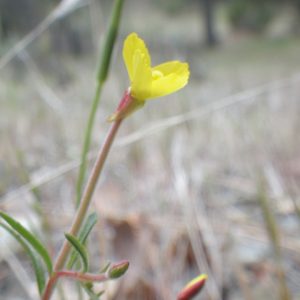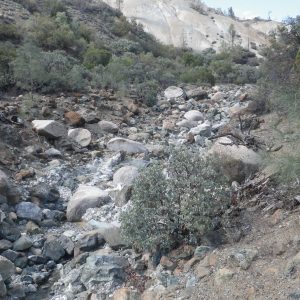In addition to the valuable career experience gained through the Chicago Botanic Garden’s Conservation and Land Management (CLM) Internship program, there are plenty of good times to be had as a CLM intern! Although my work focuses primarily on botany, one just can’t avoid encounters with the animal side of wildlife when working in the field.
DEER–HERE, THERE, AND…ALMOST EVERYWHERE. In some areas in and around the Pine Hill Preserve, it is not uncommon to see deer.
SMALL CREEPY, CRAWLY CREATURES. I am fascinated by spiders (there are so many kinds, some with beautiful coloration and patterns), and I like to observe and photograph them. BUT the thought of just one crawling on me creeps me out. Thus, I am generally attentive to what is in front of me when I walk through any type of grass and herbaceous vegetation where they tend to build their webs. During the spring before conditions turn hot and dry, ticks are typically abundant so it is important to always do a tick check when leaving the field. And in the aquatic habitats, one may be able to watch a slinking slug move effortlessly and gracefully, leaving a trail of slime behind itself.
BIRDS AND FLYING INSECTS. By participating in bird counts at the Cosumnes River Preserve, I am beginning to learn how to identify some of the waterfowl and wetland bird species. Interestingly, one of the Pine Hill Preserve neighbors has a couple of emus (he had a few more but supposedly they were taken as a meal by a mountain lion). Although wild turkeys are relatively common, there are a few peacocks which roam a residential neighborhood bordering the Pine Hill Preserve. When wildflowers are blooming in the spring, butterflies flitter about, moving from flower to flower playing a critical role in pollination. Near aquatic habitats, dragonflies can be seen darting around. Every now and then, I encounter a praying mantis; now these guys can be fascinating to watch if they begin acting aggressively toward other creatures (including pestering humans).
FROGS. Every now and then we’ll come across a tree frog while collecting seeds or conducting botanical surveys.
SNAKES. Having grown up in an area of Iowa void of poisonous snakes, it has been both a bit nerve-racking and thrilling to conduct field work in rattlesnake territory. A few rattlesnake sightings occurred either in the BLM office parking lot or just outside the shop garage door, but I didn’t personally see them. Another CLM intern and I did come across a young snake in the parking lot one afternoon; the pattern looked like it could be a rattlesnake, but it’s head wasn’t the right shape and it lacked a rattler…the snake expert of the office confirmed its identity as a gopher snake. We also had the privilege of first hearing then seeing a rattlesnake in the wild! The snake actually warned us from behind with its rattle. We were walking along a trail and stopped to look at the map on the GPS unit when we heard it. When we turned to look, we saw the tail end of the snake disappear from the trail into the vegetation about 10-12 feet behind us. Exciting! And I’m so grateful it wasn’t any closer or any more of a surprise than it was!
HERP IN CAMO. The horned lizard is appropriately named; the distinguishable pointed “horns” above their eyes and along the back of their neck can make this little lizard look a bit like a dangerous dragon, downsized. Due to their coloration, they are not so easy to see in the reddish, high-in-iron gabbro soils in and around the Pine Hill Preserve.
THE PROOF IS IN THE PRINTS. As much as I would like to see a bear in the wild (but from a safe distance and not as a surprise close encounter), sometimes I have to just take what I can get. Like a paw print providing evidence that yes, a bear has tread the same trail as I.
HEE-HAW. Like the plants, some of the animals we meet are not native but have been domesticated. This neighboring donkey gets a little curious about what we’re up to every now and then when we work on the Pine Hill Preserve parcel across the private road from his stomping grounds. One time he even tried to distract us by making funny faces and noises at us. 🙂




































